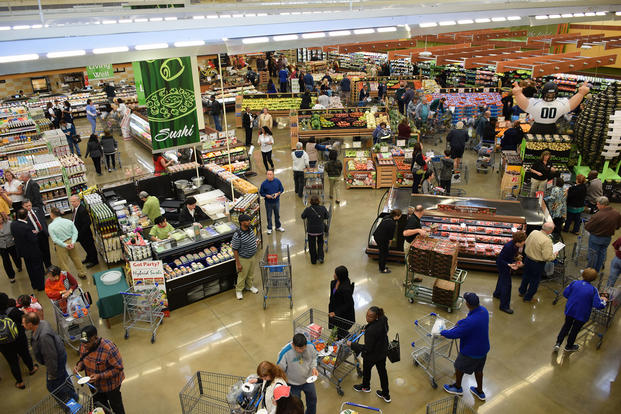The Agriculture Department has issued assurances that funding is in place to continue its food stamp program through February, despite the partial government shutdown. Thousands of active-duty troops and an estimated 1.4 million veterans benefit from the program.
Agriculture Department funding expired Dec. 21 with the onset of the shutdown, but officials announced Wednesday that full benefits for the Supplemental Nutrition Assistance Program (SNAP) will continue through February.
Agriculture Secretary Sonny Perdue said stopgap ways had been found to appropriate money for the SNAP and child nutrition programs under budgeting authorities that remained from a previous continuing resolution passed by Congress.
"At President Trump's direction, we have been working with the administration on this solution. It works and is legally sound," Perdue said in a statement Wednesday.
"And we want to assure states, and SNAP recipients, that the benefits for February will be provided," he said. "Our motto here at USDA has been to 'Do Right and Feed Everyone.' With this solution, we've got the 'Feed Everyone' part handled. And I believe that the plan we've constructed takes care of the 'Do Right' part as well."
Under the new accounting arrangement, the department will have about $4.8 billion to continue funding through February for SNAP and the Supplemental Nutrition Program for Women, Infants, and Children (WIC) program in the event that there is no resolution to the shutdown, according to Agriculture Department officials.
In 2016, a total of more than 44 million low-income Americans received SNAP benefits, according to the Agriculture Department.
The number of active-duty military households currently participating in SNAP has been difficult to track, but the most recent estimate by the Government Accounting Office in 2016 put the number at about 23,000.
The GAO report said the difficulty in estimating the number stems from the failure of the Agriculture Department and the Department of Defense to share data on active-duty troops in SNAP, Military.com's Amy Bushatz reported last year.
The Department of Veterans Affairs referred questions on the number of veterans in SNAP to the Agriculture Department, which did not immediately reply.
Last year, the Center for Budget and Policy Priorities, in a detailed analysis of census figures, estimated that about 1.4 million veterans were in SNAP.
In a report Thursday, CBBP said that the Agriculture Department's stopgap fix to keep SNAP benefits flowing through February comes with "administrative burdens and operational complexities."
However, the department's solution "should ensure that SNAP is able to stay open through February 2019 and that eligible low-income households will not face cuts to their food assistance, at least in the short term," CBBP said.
President Donald Trump and congressional Democrats have been at an impasse on appropriations to reopen the government in the dispute over funding for the southern border wall.
Trump has demanded $5.7 billion for the wall. Democrats have offered $1.6 billion for border security, but nothing for the wall.
In a tweet Friday, Trump said, "The Steel Barrier, or Wall, should have been built by previous administrations long ago. They never got it done - I will. Without it, our Country cannot be safe. Criminals, Gangs, Human Traffickers, Drugs & so much other big trouble can easily pour in. It can be stopped cold!"
About 800,000 federal workers have either been furloughed or are working without pay during the shutdown. According to the Congressional Budget Office, about 31 percent of federal workers are veterans.
The Union Veterans Council of the AFL-CIO provided statements from several veterans who have been affected by the shutdown, on the condition that only their first names be used.
Harris, an Air Force veteran working at the Federal Aviation Administration, said, "I just took out a hardship withdrawal from my Thrift Savings Plan because I'm terrified this is going to go long. I just bought a house this spring. I have car payments, credit cards and utilities along with the mortgage payment" that he won't be able to make if the shutdown continues.
Michael, an Army veteran and furloughed Agriculture Department employee, said, "We had a very austere Christmas because we thought this might happen. We didn't buy the new car we were saving up for. Thank God we didn't because we need to pay bills and the mortgage."
He added, "I figure our savings will hold out about six weeks or so."
-- Richard Sisk can be reached at Richard.Sisk@Military.com.















